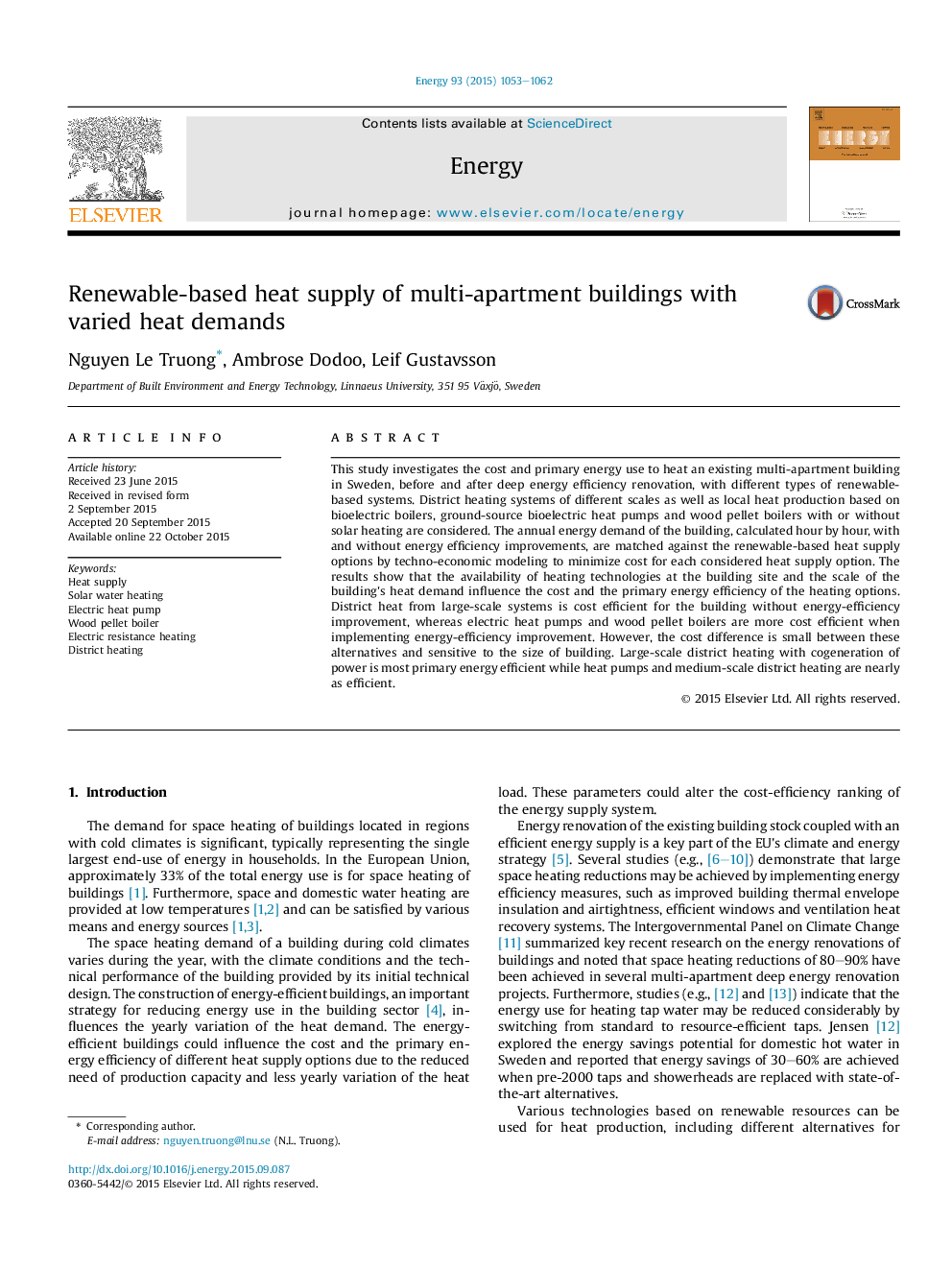| Article ID | Journal | Published Year | Pages | File Type |
|---|---|---|---|---|
| 1731158 | Energy | 2015 | 10 Pages |
•Heating technologies influence costs and primary energy use of a building.•Large-scale district heating with cogeneration of power is primary energy efficient.•Large-scale district heating is cost efficient for buildings with large heat demand.•Heat pumps and pellet boilers are cost competitive in energy-efficient buildings.
This study investigates the cost and primary energy use to heat an existing multi-apartment building in Sweden, before and after deep energy efficiency renovation, with different types of renewable-based systems. District heating systems of different scales as well as local heat production based on bioelectric boilers, ground-source bioelectric heat pumps and wood pellet boilers with or without solar heating are considered. The annual energy demand of the building, calculated hour by hour, with and without energy efficiency improvements, are matched against the renewable-based heat supply options by techno-economic modeling to minimize cost for each considered heat supply option. The results show that the availability of heating technologies at the building site and the scale of the building's heat demand influence the cost and the primary energy efficiency of the heating options. District heat from large-scale systems is cost efficient for the building without energy-efficiency improvement, whereas electric heat pumps and wood pellet boilers are more cost efficient when implementing energy-efficiency improvement. However, the cost difference is small between these alternatives and sensitive to the size of building. Large-scale district heating with cogeneration of power is most primary energy efficient while heat pumps and medium-scale district heating are nearly as efficient.
